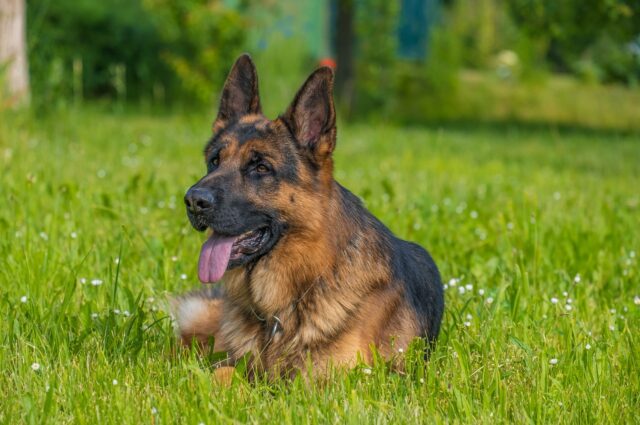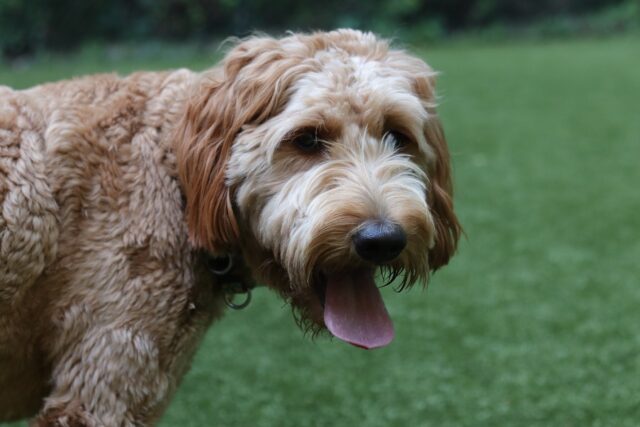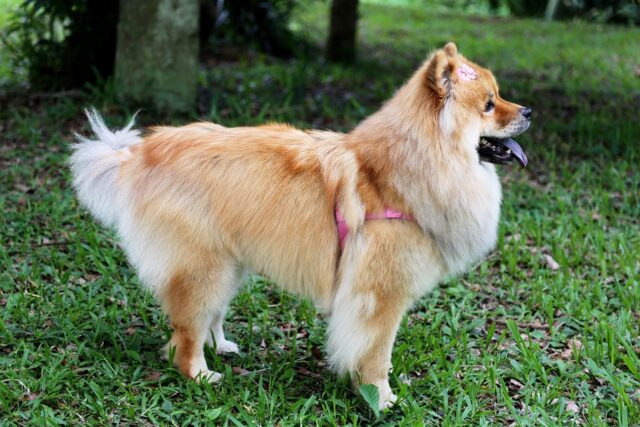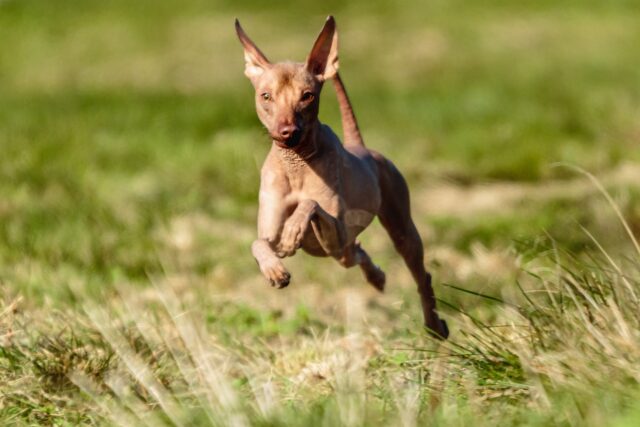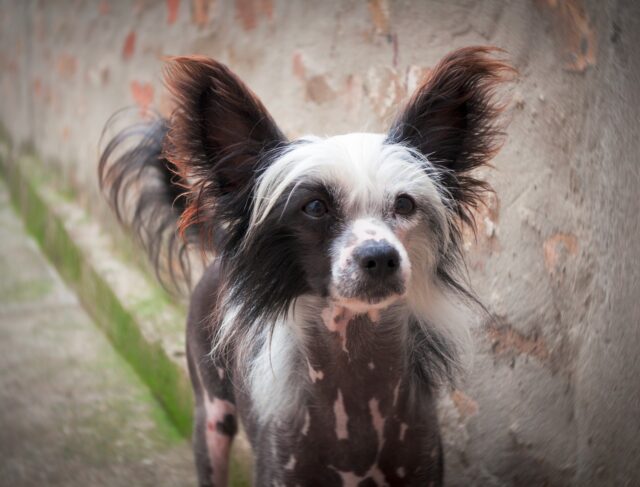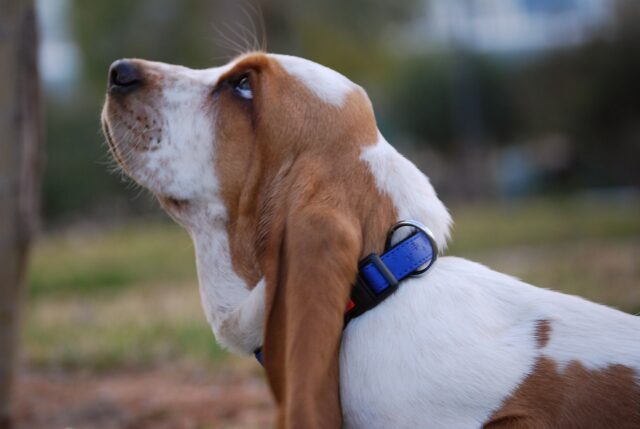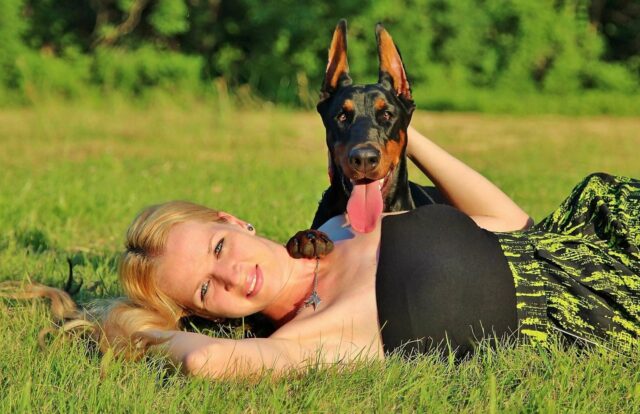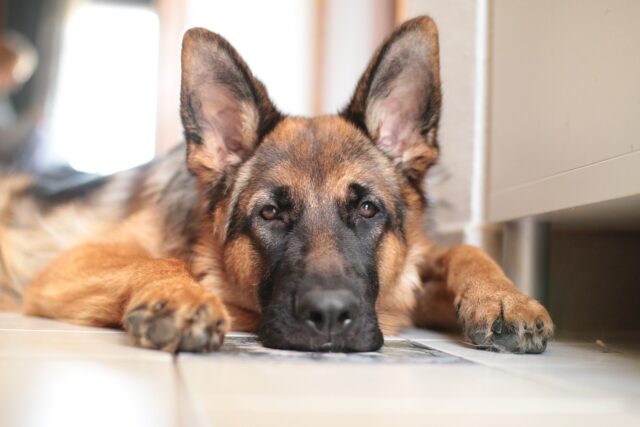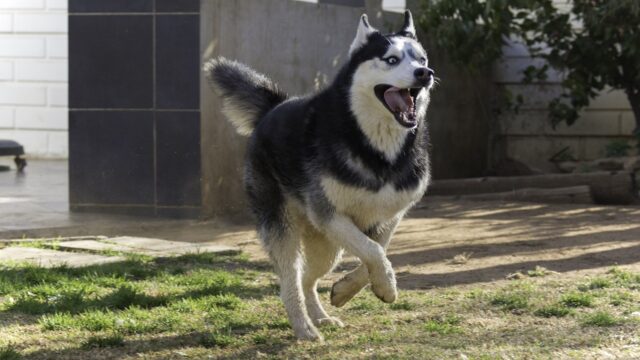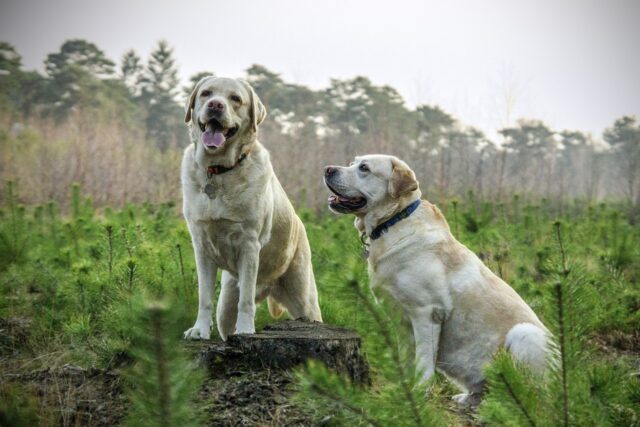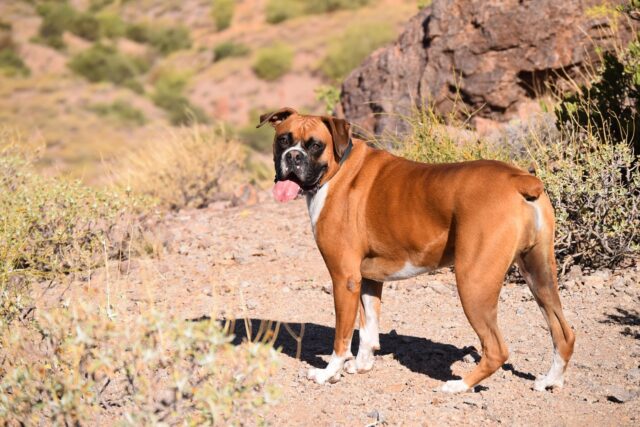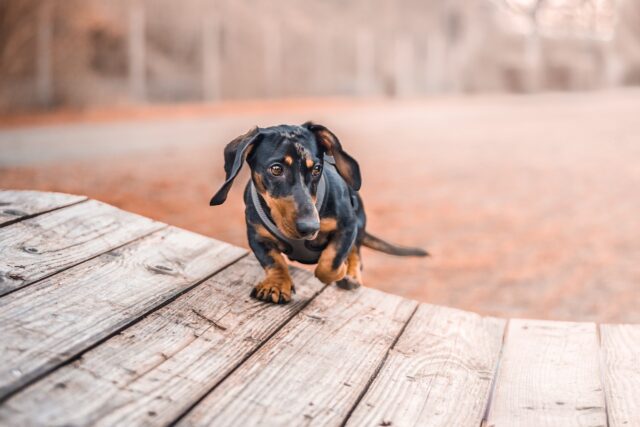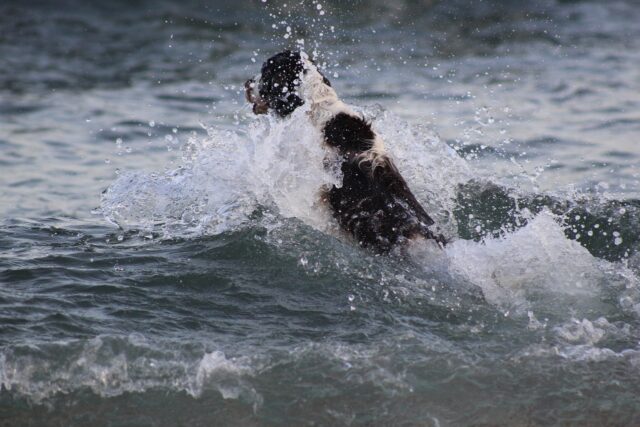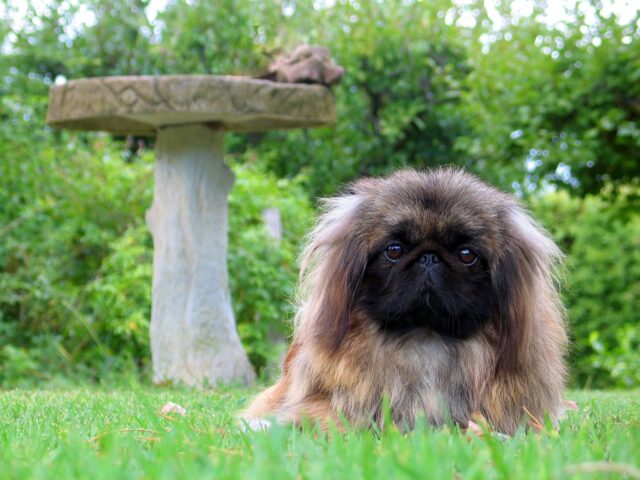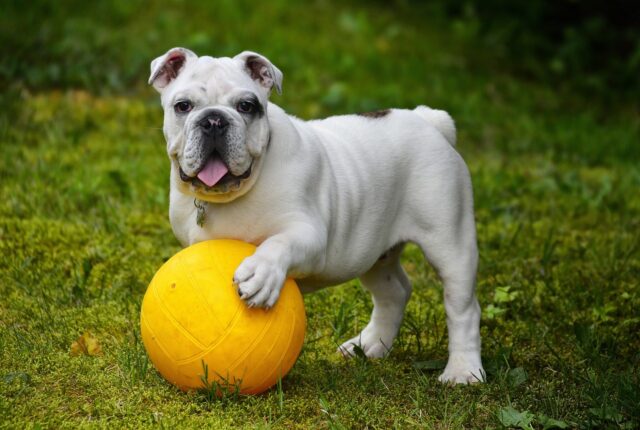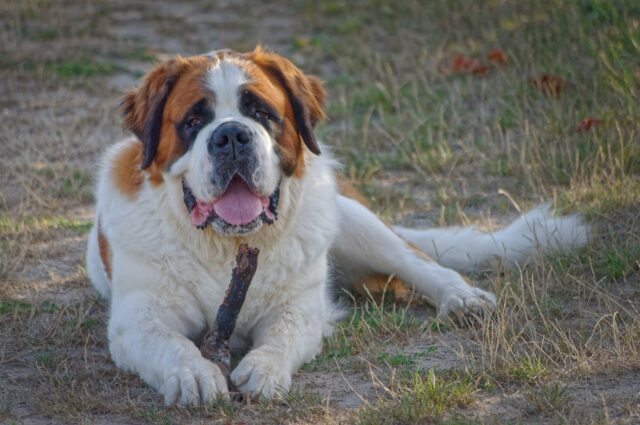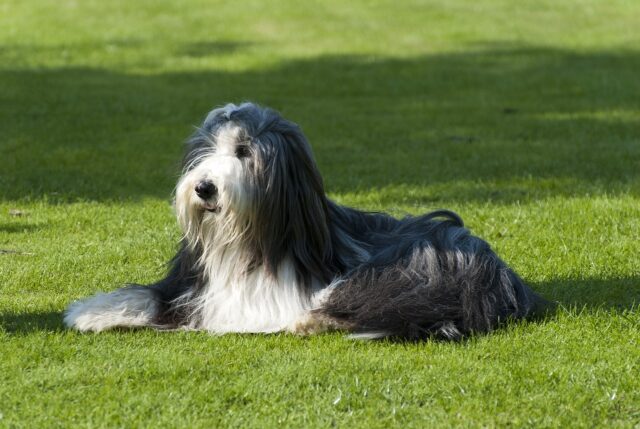11 Dog Breeds That Can Trigger Allergies
By Fernando Villarreal
There’s nothing worse than dealing with allergies, but that doesn’t mean you can’t have a dog. Today, you can get allergy shots or medication and reduce allergens in your home through HEPA filters.
But if you’re looking for a breed that doesn’t shed much or produces minimal dander, knowing more about the less challenging breeds for allergy sufferers is essential.
Dogs with high dander, like the ones listed below, can significantly impact people with allergies and asthma. Some dog breeds are more likely to cause allergic reactions due to their shedding, dander production, and saliva.
Here’s a closer look at some of the worst dog breeds for people with allergies. All these breeds are fantastic dog breeds to have at home, but if you suffer from allergies, it’s best to choose a low-shedding breed or opt for those allergy shots and meds to help you live alongside your furry best friend. Here’s the takeaway:
What Causes Dog Allergies?
Dander, composed of tiny, even microscopic, flecks of skin shed by cats, dogs, rodents, birds, and other animals with fur or feathers, can trigger severe allergic reactions in some people with dog allergies and asthma.
When people with severe allergies are exposed to dander, their immune system perceives it as a threat, which leads to an allergic reaction.
What is Pet Dander?
You may be allergic to pet dander if you suffer from a runny nose, puffy eyes, or cough. However, allergies don’t automatically mean you can’t have a dog. Thanks to their hypoallergenic traits, several breeds are considered more suitable for people with allergies.
These dogs are known for producing fewer allergens than others, primarily through reduced shedding or the nature of their coat. Breeds like the Poodle, Maltese, bichon frise, Portuguese Water Dog, and basenji are often recommended for allergy sufferers. Their unique coats either shed less hair and dander or produce less saliva, factors that contribute to allergic reactions.
Adopting a hypoallergenic dog breed can be a game-changer for allergy sufferers still wanting the companionship of a canine friend. However, it’s important to remember that no dog is 100% hypoallergenic. Spending time with a breed before committing can help gauge your reaction and ensure a good match for your home environment.
People with allergies can enjoy the benefits of dog ownership without undue discomfort by selecting a suitable breed and maintaining a clean living space. So, while allergies are a consideration, they don’t have to stop you from having a dog.
Best Doodle Breeds for Allergy Sufferers
Hypoallergenic dog breeds, including Doodle mixes, have gained popularity for their reduced shedding and dander, which can benefit allergy sufferers.
While no dog breed is 100% hypoallergenic, those looking to minimize allergic reactions often choose these breeds. Here are five Doodle mixes known for their hypoallergenic qualities:
- Labradoodle (Labrador Retriever and Poodle mix): This breed combines the friendly and loyal nature of the Labrador Retriever with the hypoallergenic coat of the Poodle, resulting in a family-friendly dog that sheds less.
- Goldendoodle (Golden Retriever and Poodle mix): Like the Labradoodle, the Goldendoodle has a coat that sheds minimally and is known for its friendly, intelligent, and affectionate nature.
- Schnoodle (Schnauzer and Poodle mix): The Schnoodle has a unique coat that ranges from smooth to wiry to soft and curly. It sheds very little, making it an excellent choice for allergy sufferers.
- Cockapoo (Cocker Spaniel and Poodle mix): Known for their soft, sometimes curly coats that shed minimally, Cockapoos are affectionate and sociable pets.
- Bernedoodle (Bernese Mountain Dog and Poodle mix): They inherit the Poodle’s hypoallergenic coat and its calm and friendly disposition, making them a great family pet less likely to trigger allergies.
These Doodle mixes are chosen not just for their hypoallergenic qualities but also for their temperament, making them great companions for families, including those with mild to moderate allergies.
What Do Redditors Say About Managing Dog Allergies
We love Reddit, so we turned to the comments to see what pet parents have to say about dog breeds and allergic reactions. Here’s the takeaway:
One Redditor says, ” You can look into getting allergy shots. My wife went from asthma attacks from poodles to being fine with any dog. Totally worth it for her.”
” Poodles. I can’t recommend these dogs enough for people with allergies. My entire family (including me) is very allergic to anything with fur, and my mom has asthma. Poodles are different in that they have hair, not fur. There is no shedding whatsoever. All they need is a bit of brushing each week and any hair they might lose will come off that way. Additionally, they’re extremely smart and friendly. My Poodle is almost twelve and is just a big sweetheart, ” says another Redditor.
” There’s no such thing as a “hypoallergenic” dog, as their dander and saliva can still cause problems for people with allergies and asthma. A poodle would be a great option, as many here have recommended. Another one (although generally rare) is a Portuguese Water Dog. They’re smaller than a standard poodle, says another Redditor.
“I have allergies and asthma. I’m VERY allergic to cats and mildly allergic to dogs. We have a Portuguese Water Dog, and for the most part, I have no allergy problems with her (I occasionally react to her saliva if I’ve already broken out with a rash/hives somewhere). We visited the breeder and spent some time with their dogs before committing to getting one to see if I had any reaction. You must groom them, but that means their fur is always lovely and cuddly soft, ” explains another Redditor.
Symptoms of Dog Allergies in People
Here are some common effects of high dander levels from dogs on people:
- Allergic Reactions: Exposure to dog dander can cause various allergic reactions, including sneezing, runny or stuffy nose, itchy or watery eyes, and skin rashes.
- Asthma Attacks: For people with asthma, exposure to high levels of dander can trigger an asthma attack, characterized by difficulty breathing, chest tightness, wheezing, and coughing.
- Eczema Flare-ups: Individuals with eczema may experience flare-ups when exposed to dog dander, resulting in itchy, red, and inflamed skin.
- Respiratory Issues: Even in individuals without pre-existing allergies or asthma, high dander levels in the environment can lead to respiratory discomforts, such as coughing and shortness of breath.
- Sleep Disturbances: Allergic reactions to dander can disrupt sleep patterns, making it difficult to fall or stay asleep due to symptoms like congestion and coughing.
High-Shedding Dog Breeds
High-shedding dog breeds include Labradors, Newfoundland, and even the tiny Pekinese that tend to shed a lot. Other breeds like the Poodle, Border Terrier, and Dachshund don’t shed as much.
The American Kennel Club(AKC) says that different dog breeds shed in various amounts. They explain that some dog breeds shed seasonally while others will shed year-round. The ten highest-shedding dog breeds include the following:
- Labrador Retriever
- German Shepherd
- Golden Retriever
- Siberian Husky
- Alaskan Malamute
- Chow Chow
- Bernese Mountain Dog
- Saint Bernard
- Pomeranian
- Australian Shepherd
Best and Worst Dog Breeds for Asthmatics
Purina says that most people assume that the longer a dog’s coat is, the more they will shed. That’s only sometimes the case. However, hypoallergenic dog breeds are best for people with dog allergies and asthma.
When considering the best and worst dog breeds for individuals with allergies, especially asthmatics, you should look beyond common myths about pet hair and pet dander. While it’s a widespread belief that the length of a dog’s coat determines its potential for causing allergies, this isn’t always the case.
The allergens that trigger reactions are often found in a dog’s dander (skin flakes), saliva, and urine, not just in the fur. Hypoallergenic dog breeds produce fewer allergens than others, making them a better choice for those with allergies or asthma. These breeds typically shed less fur and dander, reducing the amount of allergens in the home. But there are also other low shedding or non-shedding breeds to consider.
For instance, the Xoloitzcuintli, available in toy, miniature, and standard sizes, comes in hairless and coated varieties. The hairless type is particularly noted for its minimal shedding and is best for people with pet allergies.
Also, many dog breeds are known to increase allergy symptoms in people with asthma and dog allergies. These breeds tend to shed more, expanding the distribution of allergens in their environment. To minimize allergic reactions and respiratory distress, it’s best for asthmatics or people who suffer from allergies to avoid high-shedding breeds.
Should Allergies Keep You From Having a Dog?
Having allergies doesn’t automatically mean you can’t have a dog. Thanks to their hypoallergenic traits, several breeds are considered more suitable for people with allergies. These dogs are known for producing fewer allergens than others, primarily through reduced shedding or the nature of their coat.
Breeds like the Poodle, Maltese, Bichon Frise, Portuguese Water Dog, and Basenji are often recommended for allergy sufferers. Their unique coats shed less hair and dander or produce less saliva, which can contribute to allergic reactions.
Hypoallergenic Dog Breeds
Hypoallergenic dog breeds are less likely to cause allergic reactions in people sensitive to dog dander, hair, or saliva. While no dog breed is 100% hypoallergenic, some breeds have characteristics that make them more suitable for allergy sufferers.
These breeds typically shed less hair and skin dander, which are common allergens. Examples of hypoallergenic dog breeds include the Poodle, Maltese, Chinese Crested, Bichon Frise, Portuguese Water Dog, Basenji, and Schnoodle (a mix of Schnauzer and Poodle).
Poodles, for instance, are known for their curly coats that shed minimally, trapping dander and hair within the coat rather than dispersing it into the environment. Similarly, the Bichon Frise has a fluffy coat that requires regular grooming to maintain its hypoallergenic properties.
On the other hand, the Chinese Crested comes in a hairless variety, significantly reducing the amount of dander and hair in the home.
Allergies by Dog Breeds
1. Basset Hound
Basset Hounds are a favorite among many, with their lovable demeanor and mild-mannered temperament. However, their propensity for drooling and shedding makes them less suitable for individuals with allergies. Their short coat sheds considerably, contributing to more dander in the environment, a common allergen.
The breed’s tendency to drool endears them and spreads saliva allergens, which, when dried, can become airborne and exacerbate allergic reactions. Moreover, while seemingly easy to manage, their short, dense coat requires regular grooming to control shedding and minimize the spread of dander.
Adding to the complexity, Basset Hounds are prone to skin conditions that can worsen dander production. Their skin can produce excess oils and Malassezia yeast, contributing to a characteristic smell and requiring diligent care to prevent infections and allergies from flaring.
Regular baths with hypoallergenic shampoos and careful dietary management can help mitigate some of these issues. Nevertheless, even with rigorous grooming and care, environmental allergens may still be significant for sensitive individuals.
- GROUP: Hound (AKC)
- HEIGHT: Up to 15 inches
- WEIGHT: 40 to 65 pounds
- COAT AND COLOR: Short, dense coat commonly seen in tri-color (tan, black, and white), lemon, and red
- LIFE EXPECTANCY: 10 to 12 years
2. Doberman Pinscher
The Doberman Pinscher, known for its loyalty, intelligence, and guarding capabilities, also carries characteristics that might be challenging for individuals with allergies.
While not typically listed among the worst breeds for allergy sufferers, it’s essential to understand how this breed could affect those with sensitivities.
Dobermans have short, sleek coats that are less likely to trap dander than longhaired breeds. However, they do shed throughout the year, which can distribute allergenic dander around the home.
Additionally, Dobermans produce saliva and skin oils that can carry allergens like all dogs. Their grooming needs are relatively low compared to fluffier breeds, but regular brushing can help minimize shedding and reduce the spread of dander.
- GROUP: Working (AKC)
- HEIGHT: 24 to 28 inches
- WEIGHT: 60 to 100 pounds
- COAT AND COLOR: Short coat; available in black, red, blue, and fawn with rust markings
- LIFE EXPECTANCY: 10 to 12 years
- German Shepherd
German Shepherds, renowned for their intelligence, loyalty, and versatility, are among the most popular breeds worldwide. However, owning a German Shepherd may present some challenges for individuals with allergies.
These dogs have a dense double coat that sheds year-round and even more so during the spring and fall shedding seasons. This can significantly increase the amount of pet dander and hair in the environment, common triggers for allergic reactions.
Additionally, German Shepherds are active dogs that enjoy outdoor activities, which can lead to them bringing in pollen and other outdoor allergens into the home. Their grooming needs are considerable; regular brushing is essential to manage shedding and minimize the spread of dander.
While their loyal and protective nature makes them excellent companions and family members, potential owners with allergies should consider the implications of living with a breed that sheds heavily.
- GROUP: Herding (AKC)
- HEIGHT: 22 to 26 inches
- WEIGHT: 50 to 90 pounds
- COAT AND COLOR: Dense, double coat; colors include black, black and tan, sable, red and black, and gray
- LIFE EXPECTANCY: 7 to 10 years
4. Siberian Husky
Siberian Huskies’ striking appearance and vibrant energy captivate dog lovers worldwide. Despite their thick double coat, which suggests otherwise, Siberian Huskies are not the worst breed for allergy sufferers, but they present some considerations.
Their dense fur is designed to protect them from cold climates, resulting in substantial seasonal shedding. This biannual shedding period releases a large amount of hair and dander into the environment, potentially triggering allergic reactions in sensitive individuals.
Moreover, Huskies are known for their cleanliness and are often likened to cats in their grooming habits. This self-cleaning behavior can reduce the spread of allergens. However, no breed is truly hypoallergenic, and dander, a common allergen, is still present.
Managing allergies around a Siberian Husky involves regular grooming, including frequent brushing, to manage shedding and minimize dander distribution. Creating an allergy-friendly environment with air purifiers and regular cleaning can also help reduce allergen levels in the home.
- GROUP: Working (AKC)
- HEIGHT: 20 to 23.5 inches
- WEIGHT: 35 to 60 pounds
- COAT AND COLOR: Medium-length, double coat; color varies widely from black to pure white, including shades of gray, brown, and red
- LIFE EXPECTANCY: 12 to 14 years
- Labrador Retriever
Labrador Retrievers, cherished for their friendly demeanor, intelligence, and loyalty, rank as one of the most popular dog breeds for families. However, their appeal comes with considerations for allergy sufferers.
Labradors possess a dense, water-resistant double coat that sheds seasonally and year-round, contributing significantly to household dander. This shedding can be particularly challenging for individuals with sensitivities to pet hair and skin flakes.
Moreover, Labradors are known for their love of outdoor activities, often bringing additional allergens such as pollen and dust into the home. Their frequent shedding and outdoor activities necessitate a robust grooming routine to manage the spread of allergens.
Regular brushing, bathing, and a clean living environment can help mitigate some of these concerns, making it easier for allergy sufferers to coexist with these beautiful dogs.
- GROUP: Sporting (AKC)
- HEIGHT: 21.5 to 24.5 inches
- WEIGHT: 55 to 80 pounds
- COAT AND COLOR: Short, dense, water-resistant coat; colors include black, yellow, and chocolate
- LIFE EXPECTANCY: 10 to 12 years
6. Boxer
With their muscular build and boundless energy, Boxers are adored for their playful nature and loyalty. However, like many breeds, they come with their considerations for individuals with allergies.
Boxers are known for their short, sleek coat that requires minimal grooming, but they do shed. While their shedding may be less intensive than that of longhaired breeds, it is still present and can contribute to allergens in the home environment.
Moreover, Boxers are prone to various skin conditions that can exacerbate allergy symptoms for their owners. These conditions may increase scratching, releasing more dander and hair into the air.
Managing a Boxer’s skin health through regular veterinary check-ups, proper nutrition, and routine grooming can help minimize these issues. Additionally, Boxers produce saliva, another potential allergen, especially in a breed known for its jowly appearance and tendency to drool.
- GROUP: Working (AKC)
- HEIGHT: 21.5 to 25 inches
- WEIGHT: 65 to 80 pounds
- COAT AND COLOR: Short, smooth coat; fawn, brindle, and sometimes white
- LIFE EXPECTANCY: 10 to 12 years
7. Dachshund
Dachshunds, with their distinctive long bodies and short legs, are beloved for their brave and playful nature. However, it’s essential to consider the breed’s grooming needs and potential for causing allergic reactions for individuals with allergies. Dachshunds come in three coat types: smooth, wirehaired, and longhaired, each with different grooming needs.
The smooth-coated Dachshund sheds the least but requires regular brushing to remove loose hairs and minimize dander. Wirehaired and longhaired Dachshunds, on the other hand, need more frequent grooming to prevent matting and reduce allergens.
Additionally, Dachshunds can be prone to skin issues that may increase dander, a common allergen for sensitive individuals. Regular check-ups with a veterinarian can help manage these conditions and keep the skin healthy. Dachshunds also love to burrow and may bring outdoor allergens into the home, which could exacerbate allergies.
- GROUP: Hound (AKC)
- HEIGHT: 5 to 9 inches
- WEIGHT: Up to 32 pounds
- COAT AND COLOR: Three coat varieties: smooth, wirehaired, and longhaired; colors include chocolate, tan, black, red, and various patterns
- LIFE EXPECTANCY: 12 to 16 years
- Cocker Spaniel
With their soulful eyes and luxurious coats, Cocker Spaniels are cherished for their gentle and affectionate nature. However, owning a Cocker Spaniel may require extra consideration for individuals with allergies. These dogs have medium-length coats ranging from wavy to curly and are known for their tendency to shed.
Regular grooming is essential to manage their coat, reduce shedding, and minimize the spread of allergens. In addition to shedding, Cocker Spaniels are prone to skin allergies, which can exacerbate dander production, a common allergen for many people.
These allergies can lead to excessive scratching, further releasing dander and hair into the environment. Managing a Cocker Spaniel’s allergies involves routine veterinary care, a suitable diet, and perhaps medication to alleviate symptoms.
- GROUP: Sporting (AKC)
- HEIGHT: 13.5 to 15.5 inches
- WEIGHT: 20 to 30 pounds
- COAT AND COLOR: Medium length, silky coat; colors include black, liver, red, gold, tan, and combinations of these colors
- LIFE EXPECTANCY: 10 to 14 years
- Pekingese
Pekingese holds a special place in their admirers’ hearts because of their regal origins and distinctive, lion-like mane. Known for their self-important demeanor and affectionate loyalty to their owners, these dogs carry the legacy of ancient Chinese nobility.
However, potential owners with allergies should consider the breed’s grooming requirements and their implications for allergen exposure. The Pekingese possesses a thick, double coat that sheds moderately throughout the year, potentially contributing to household allergens.
Their long, luxurious fur requires regular grooming to prevent matting and minimize shedding, which can help manage the spread of dander.
Yet, the Pekingese’s grooming needs and their predisposition to skin allergies may pose challenges for individuals with sensitive allergies. Regular vet visits and proper diet can help manage these skin conditions and reduce symptoms.
- GROUP: Toy (AKC)
- HEIGHT: 6 to 9 inches
- WEIGHT: Up to 14 pounds
- COAT AND COLOR: Long, coarse outer coat with a thick, softer undercoat; colors include gold, red, sable, black, and combinations
- LIFE EXPECTANCY: 12 to 14 years
- Bulldog
Bulldogs, with their distinctive, wrinkled face and sturdy build, are known for their gentle disposition and courageous personality. These dogs are adored for their loyalty and affectionate nature, making them excellent companions.
However, individuals with allergies should be aware of a few considerations before bringing a Bulldog into their home. Bulldogs have a short, fine coat that sheds moderately throughout the year, which can contribute to environmental allergens.
Furthermore, Bulldogs are brachycephalic, meaning they have a short nose and flat faces, which can lead to breathing issues and excessive drooling.
Their unique facial structure requires regular cleaning of the wrinkles to prevent skin infections and irritation, which can also affect allergy sufferers. Additionally, Bulldogs can be prone to various skin conditions that may exacerbate the presence of allergens.
- GROUP: Non-Sporting (AKC)
- HEIGHT: 14 to 15 inches
- WEIGHT: 40 to 50 pounds
- COAT AND COLOR: Short, smooth coat; colors include red, white, fawn, and piebald
- LIFE EXPECTANCY: 8 to 10 years
11. Saint Bernard
Saint Bernards are known for their massive size, gentle nature, and iconic role as rescue dogs in the Swiss Alps. They possess a calm demeanor and are exceptionally loyal and good-natured, making them excellent family pets.
However, individuals with allergies should know the breed’s characteristics that could affect their condition. Saint Bernards have a dense, double-layer coat that sheds heavily, especially during seasonal changes. This shedding can significantly increase the amount of dander and pet hair in the home environment, common triggers for allergic reactions
.Their size means more skin and potentially more dander than smaller breeds. Regular grooming, including frequent brushing and baths, is crucial to managing shedding and minimizing allergens. Despite the grooming challenges, the breed’s affectionate nature and patience with children often make the extra effort worthwhile for many families.
- GROUP: Working (AKC)
- HEIGHT: 26 to 30 inches
- WEIGHT: 120 to 180 pounds
- COAT AND COLOR: Two coat types: smooth and long; colors include white with red, brown, or brindle markings
- LIFE EXPECTANCY: 8 to 10 years
What Should You Do at Home if You Have a Heavy Shedder
An easy fix is using allergy-reducing dog shampoo and grooming brushes for heavy shedders. Managing the fur can feel overwhelming when dealing with a heavy-shedding dog at home.
However, using the right tools and approach, you can significantly reduce shedding and keep your house clean. Here are some other effective strategies:
- Invest in a High-Quality Deshedding Tool: Products like the FURminator deShedding Tool are designed to reach deep beneath your dog’s topcoat to gently remove loose hair and undercoat without damaging the coat or cutting the skin.
- Regular Brushing: Using the right brush for your dog’s coat type can dramatically reduce shedding. The Chris Christensen Original Series Oval Brush is an excellent option for all hair types, effectively removing loose fur while being gentle on the skin.
- Use a Specially Formulated Dog Shampoo: A good de-shedding shampoo can help loosen the undercoat and remove loose fur while bathing. Look for shampoos formulated explicitly for shedding control, as they can make a significant difference in managing your dog’s shedding.
- Maintain a Healthy Diet: A dog’s coat health is directly linked to their diet. Ensure your dog eats high-quality food rich in essential fatty acids to promote healthy skin and coat.
- Regular Professional Grooming: Sometimes, a professional groomer’s help can be invaluable, especially for breeds with complex coat types. Professional grooming sessions can deeply clean the coat, remove dead fur, and even advise how to manage shedding at home.
- HEPA Filter Vacuuming: Equipping your home with a vacuum that has a HEPA filter can be a game-changer in your fight against allergens and dander. These filters are designed to trap particles as small as 0.3 microns—including pet dander, pollen, and dust mites—ensuring that your cleaning efforts significantly reduce allergens in your home. Regular vacuuming, especially in areas where your pet spends most of its time, can help keep the air clear and your allergy symptoms at bay.
Final Thoughts
All breeds are terrific, but adopting or purchasing a hypoallergenic dog breed can be a game-changer if you’re an allergy sufferer. By choosing a suitable low-shedding breed and maintaining a clean living space, people with allergies can enjoy the benefits of dog ownership without having to suffer from allergies.
So, while allergies are a consideration, they don’t have to be a barrier to having a dog. Remember that regular brushing can reduce dander and that spring season is usually the worst time of year. They are shedding as the coat gets ready for summer.
Also, remember that Omega-3 and 6 fatty acids play a vital role in a dog’s skin health, promoting a shiny coat and supporting the skin’s barrier function.
Omega-3 fatty acids, in particular, have strong anti-inflammatory properties. This can help soothe skin conditions that cause excessive scratching in dogs, thereby reducing the amount of dander and hair released into the environment. For people with allergies, less dander means fewer allergic reactions!

